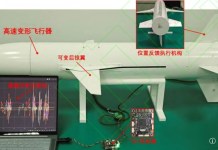Outgoing Japanese Prime Minister Shinzo Abe on Friday (September 11) announced that the government under his successor will devise a new ‘National Defense Program’ to detect and counter missile threats before the end of the current year.
SAAB, The Makers of Gripen Jets To Equip German Navy With Anti-Ship Missiles
As reported by Kyodo News, a Tokyo based news agency, Abe, who took the decision to resign last month due to health issues, called for a review of the security policy due to growing regional threats from North Korea.
“I believe we must improve our deterrence and reduce our country’s risk of attacks by ballistic missiles and other means.” While holding sufficient discussions with the ruling parties, (the government) will set an appropriate path within the year to deal with the difficult security environment surrounding Japan,” said Abe, in a statement released just days before his departure.
It is reported that the country’s defense minister and others at the National Security Council are discussing ways to make the country’s deterrence stronger, which involves considering plans to improve strike capabilities with the US.
However, his statement did not specify guidelines for the National Defense Program or medium-term defense program, both of which are expected to be revised before the beginning of 2021.
The move comes at the back of the Japanese government’s decision in June to scrap the plan of deploying the land-based US-made Aegis Ashore Missile Defence Systems, which were designed to detect and counter North Korean ballistic missiles.
Japanese Defence Minister Taro Kono, while briefing a press conference, had said that he took the decision to stop the deployment due to the technical issues as well as the cost.
“I made a decision on Friday to suspend the process. For the time being, Japan will continue to counter (the threat) with Aegis-equipped ships” said Kono.
According to defense ministry documents, the planned cost for the operation and maintenance for the two systems for the next 30 years was around $4.1 billion, which piled huge pressure on the government’s finances that have been hit by the Coronavirus pandemic.

Located in Akita city and in Yamaguchi prefecture of southern Japan, the two proposed Lockheed Martin Co radar sites would have had radars more powerful than the ship-based version of Aegis operated by Japan currently.
The systems were touted to have helped reduce the burden on Japan’s overstretched Navy by countering recent missile advances by North Korea.
The decision to scrap the deployment could not have come at a worse time with both Japan and the US trying to enhance their strategic ties in light of China and North Korea continuing to bulk up inventories including the latest ballistic missiles.
Initially conceived as an integral part of the European Phased Adaptive Approach designed to protect Europe from missiles attacks from the Middle East, the deadly Aegis Ballistic Missile Defence System (ABMDS) consists of the AN/SPY radar, the Standard Missile (SM), and the Aegis Combat System.
The systems enable warships to shoot down enemy ballistic missiles by expanding the Aegis Combat System with the addition of the AN/SPY-1 radar and Standard missile technologies.




